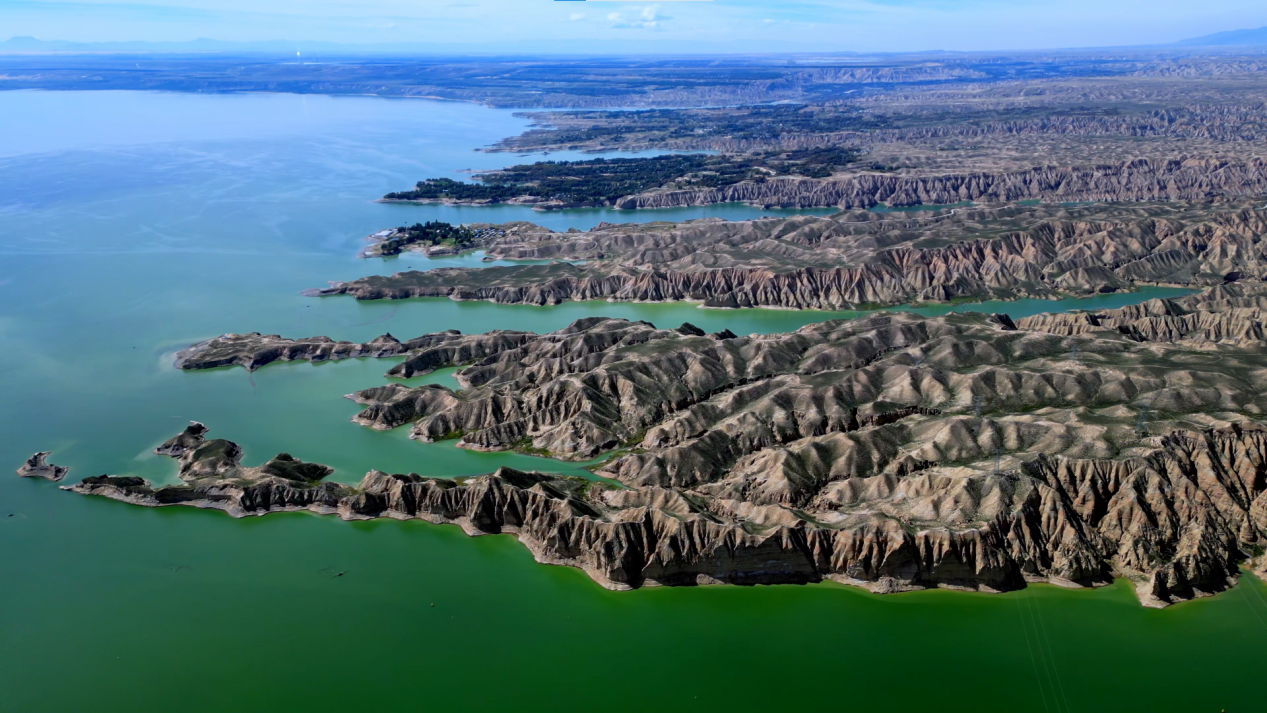12-11
Culture China Tour | Gen Z’s Journey into Yellow River Culture: Qinghai Edition - The Source of Three Rivers, Unfolding the Melody of China
 2024-12-02
2024-12-02

The Yellow River surges down from the northern slopes of the Bayan Har Mountains, flowing through 16 counties in Qinghai Province and stretching over 1,455 kilometers. At this point, Kuang Qiongqiong, a bilingual host from Jinan International Communication Center, witnessed the “original” form of the Mother River of the Chinese nation.

The Huangshui River, an important tributary of the upper Yellow River, flows like a silver ribbon through the city. Its source lies in Danggar Ancient City, also known as the “Commercial Hub” and “Little Beijing”.


In this ancient city, a distinctive local delicacy embodies the rich history of ethnic integration in Huangyuan. Li Xulin, an inheritor of Qinghai’s intangible cultural heritage, shared with Qiongqiong that traditional Qinghai cuisine has long been dominated by boiled beef and mutton. However, the arrival of inland chefs brought new culinary techniques and ideas, leading to the creation and enduring popularity of Huangyuan Spicy and Sour Pork Tenderloin.

Another intangible cultural heritage of the ancient city, Huangyuan leather embroidery, similarly reflects the harmonious blend of ethnic cultures. Zhao Yanfang, inheritor of Huangyuan Leather Embroidery in Qinghai, proudly showcased a stunning piece of her work. The embroidery vividly depicts sheep leisurely grazing on the grassland. She explained that this piece holds special significance, as it was presented by Qinghai Province to the International Olympic Committee during the 2008 Olympics.

Longyang Gorge, located in Gonghe County, Qinghai Province, is 1,684 kilometers downstream from the source of the Yellow River and 3,376 kilometers upstream from its estuary. As the first gorge the Yellow River encounters after flowing through the vast Qinghai grasslands and entering the canyon region, it rushes forward with thunderous momentum, only to become gentle and profound in the embrace of Longyang Gorge.

On Longyang Lake, Captain Zhao Yonglong skillfully steered his boat. Born and raised in the area, Zhao returned to work as a captain after graduating from university. He expressed his hope that, through his work, more people would come to know and appreciate his homeland.

Before the construction of the Longyang Gorge Hydropower Station, the Yellow River's waters surged unchecked, and riverside villagers relied mainly on farming. After the dam's completion and the formation of the reservoir, arable land decreased, prompting locals to turn to fishing. Each year, from August 20 to November 20, villagers catch hypomesus olidus in the lake, generating considerable income for their households. These fisheries have nurtured local residents, creating a unique "fishing village" on the Qinghai-Tibet Plateau.


Meanwhile, Qinghai Lake, known as the "Blue Gem in Qinghai's Crown", has a legendary origin. 130,000 years ago, Qinghai Lake flowed eastward into the Yellow River. However, as the mountains east of the lake rose, it transformed into China’s largest inland saltwater lake.

Qinghai Lake is home to only one species of fish, the Przewalski's naked carp, which is a nationally protected species of second-class status. Thanks to the lake's long-standing fishing moratorium, the naked carp population has grown from just over 2,000 tons in 2000 to more than 120,000 tons today, becoming an integral part of the lake's ecosystem. Qinghai Lake reflects the beauty of ecological harmony like a natural mirror. Its protection is not only vital for the local waters but also crucial for the ecological security of the Yellow River.

Qinghai and the Yellow River are intertwined. As people of various ethnic groups have migrated and settled here, diverse cultural elements have clashed but gently merged, creating a unique cultural landscape that continues to thrive.




